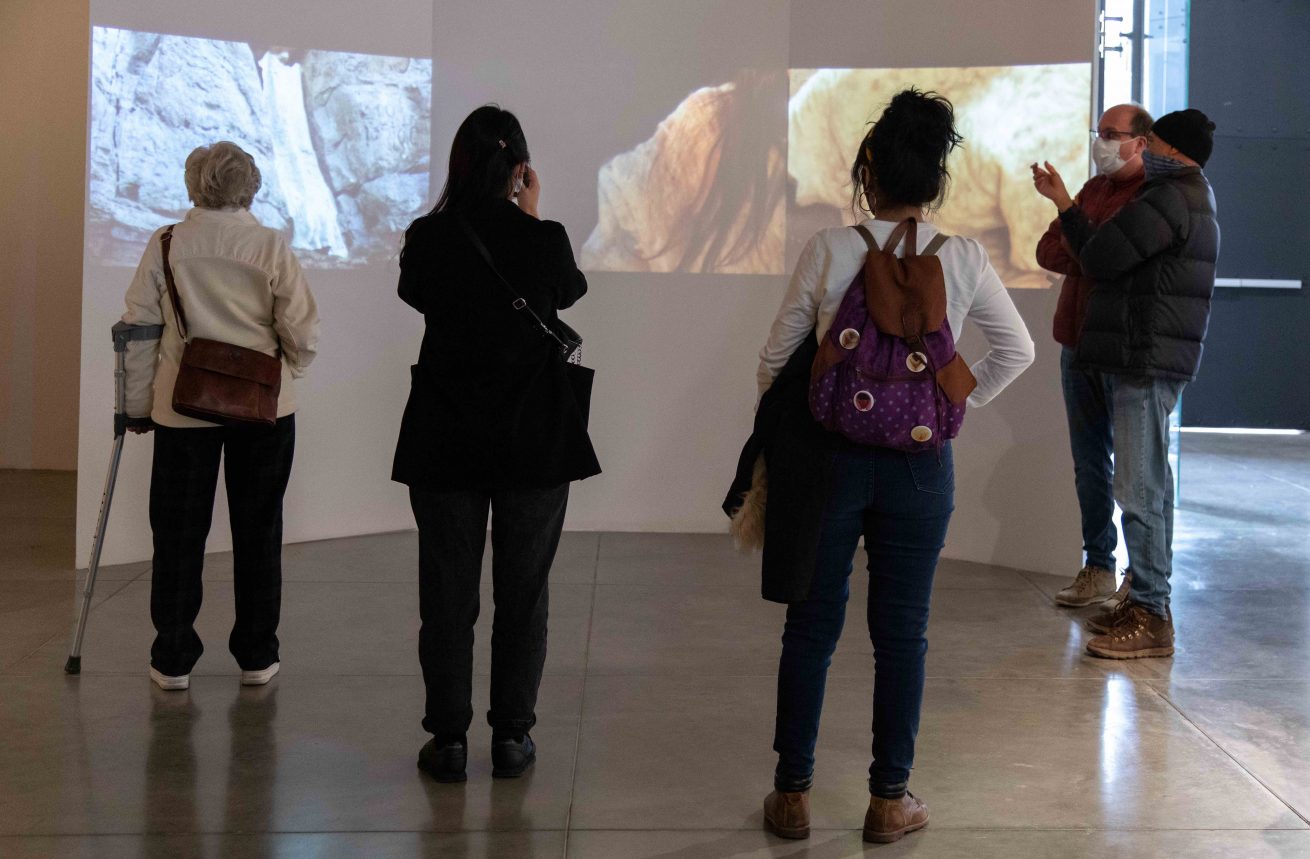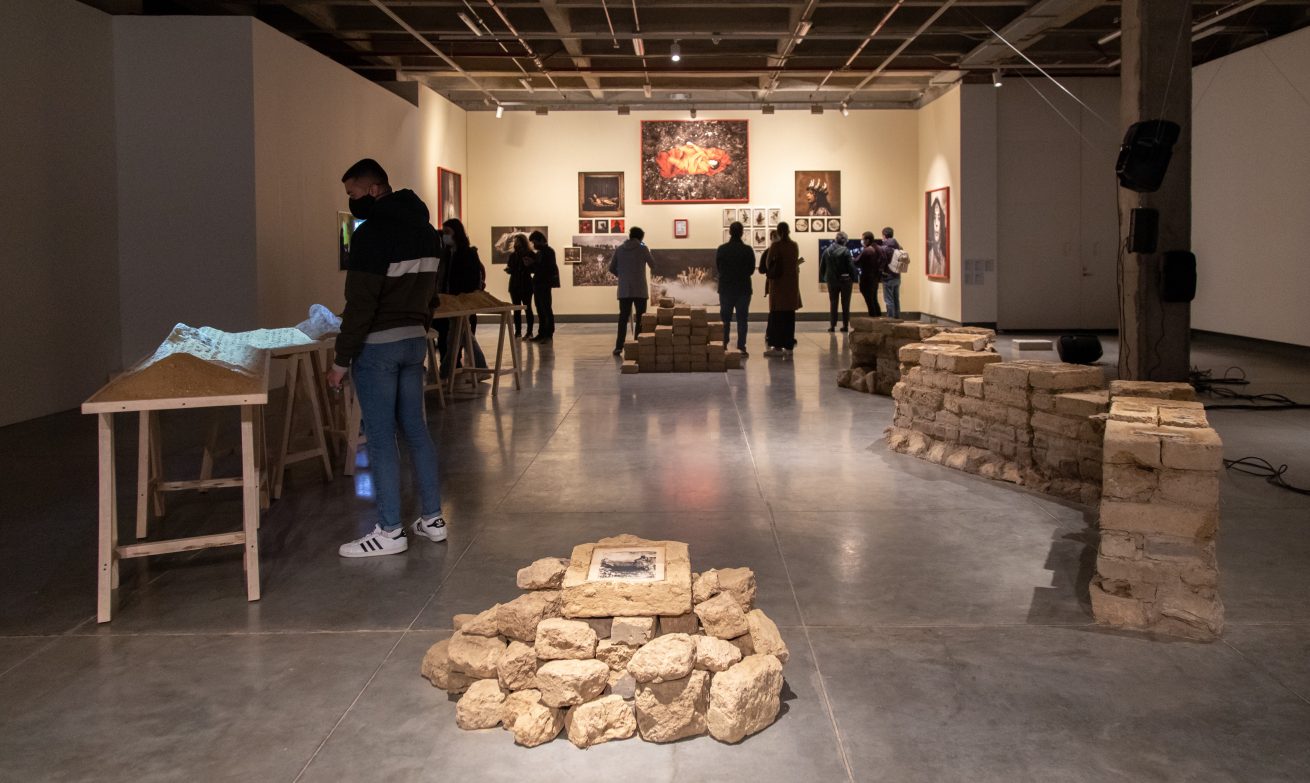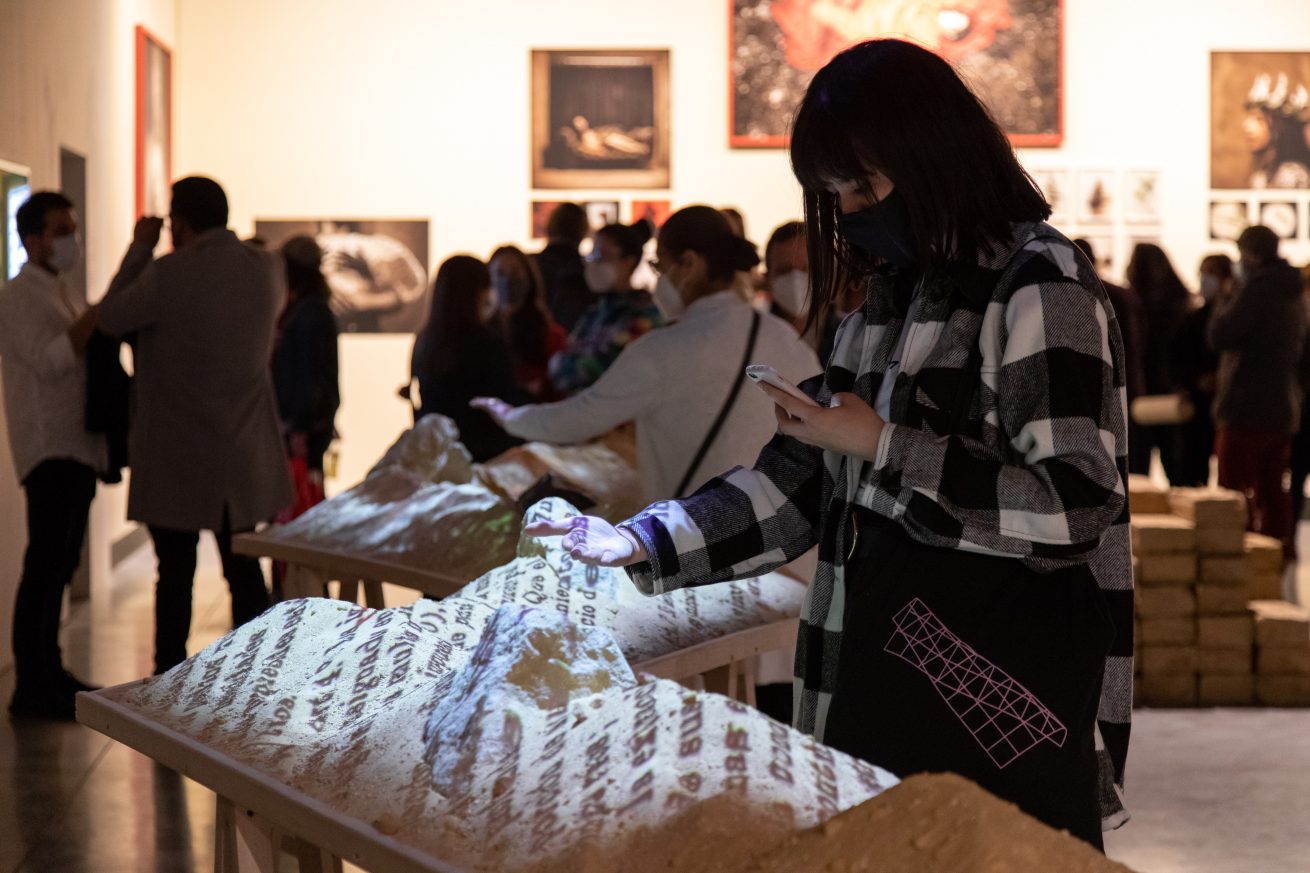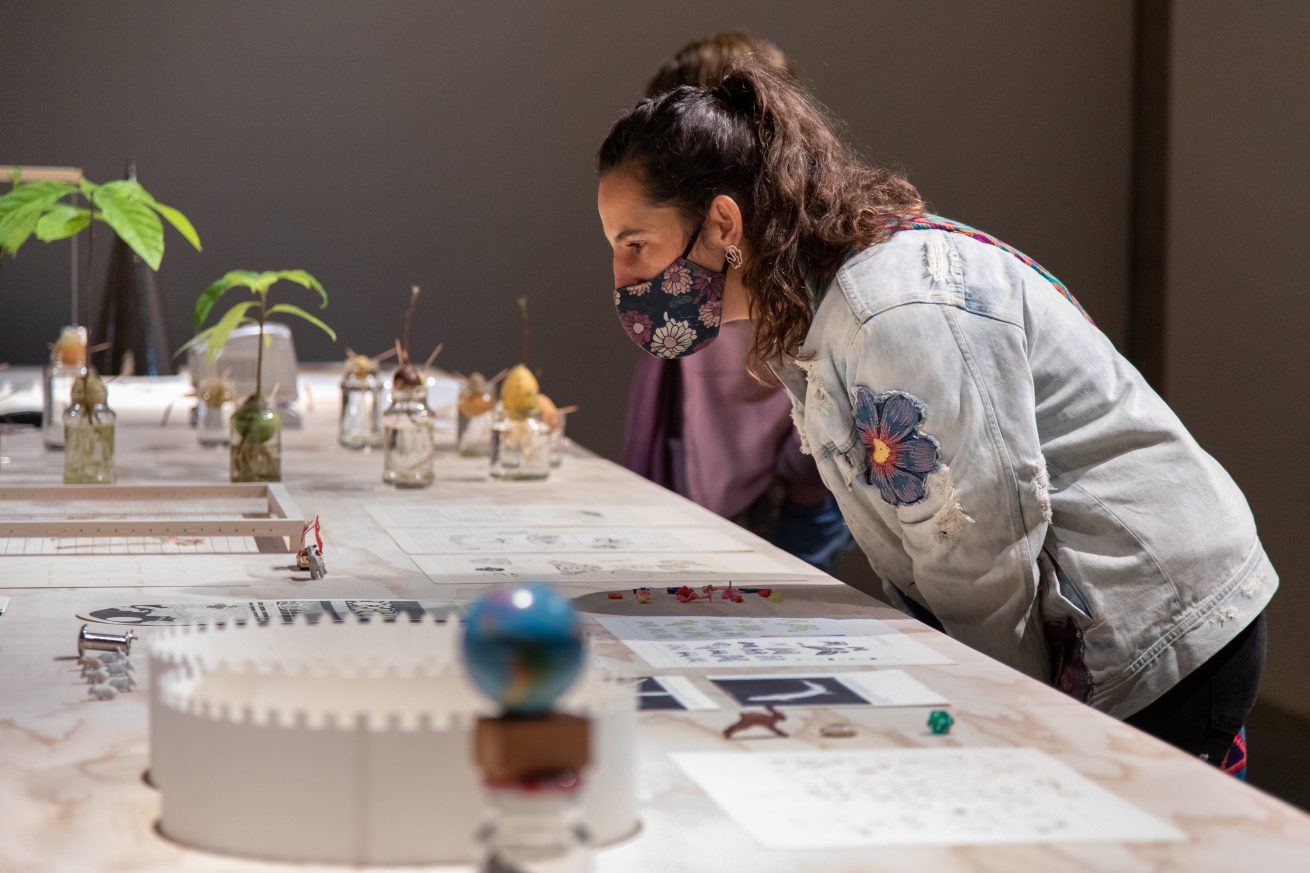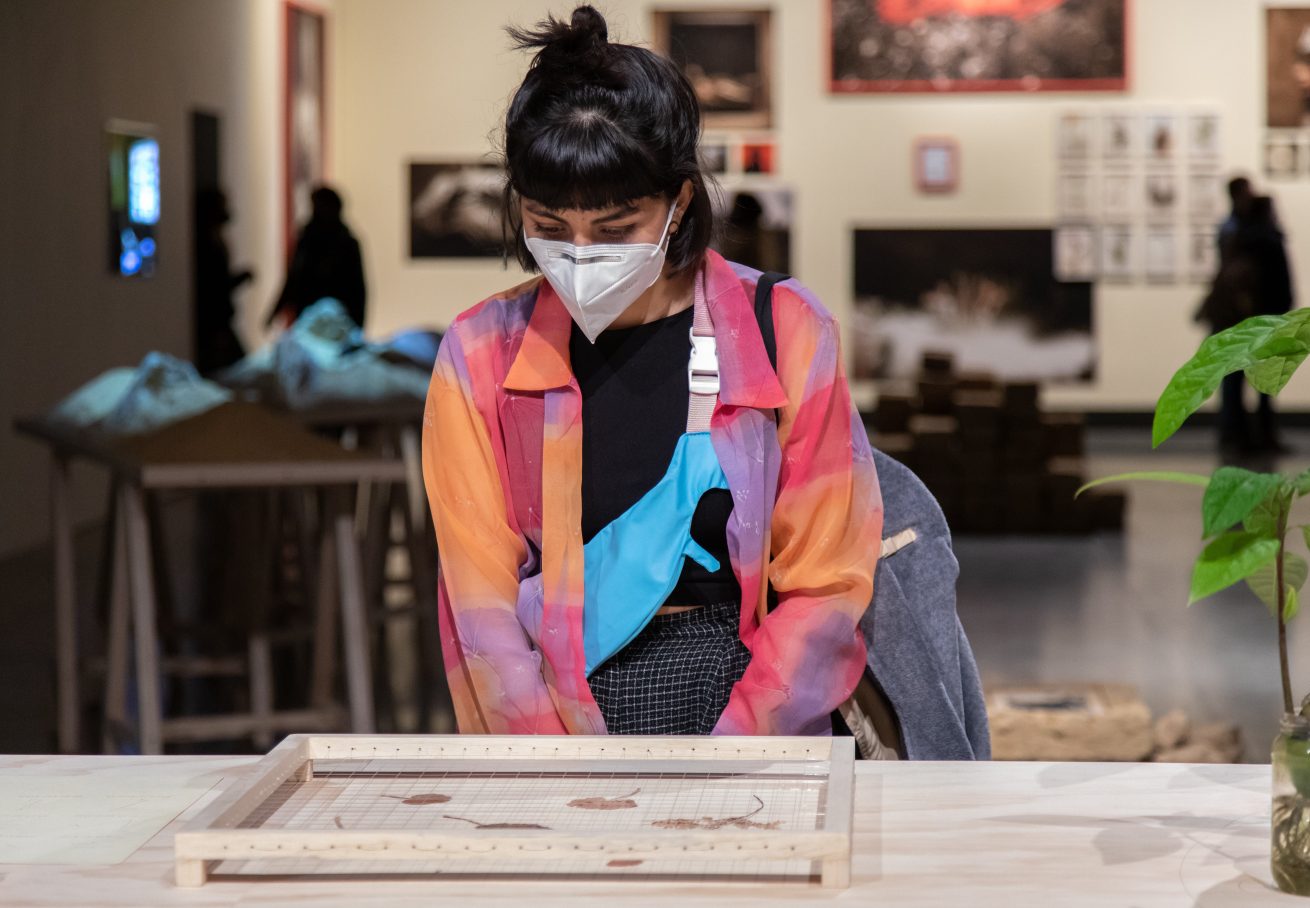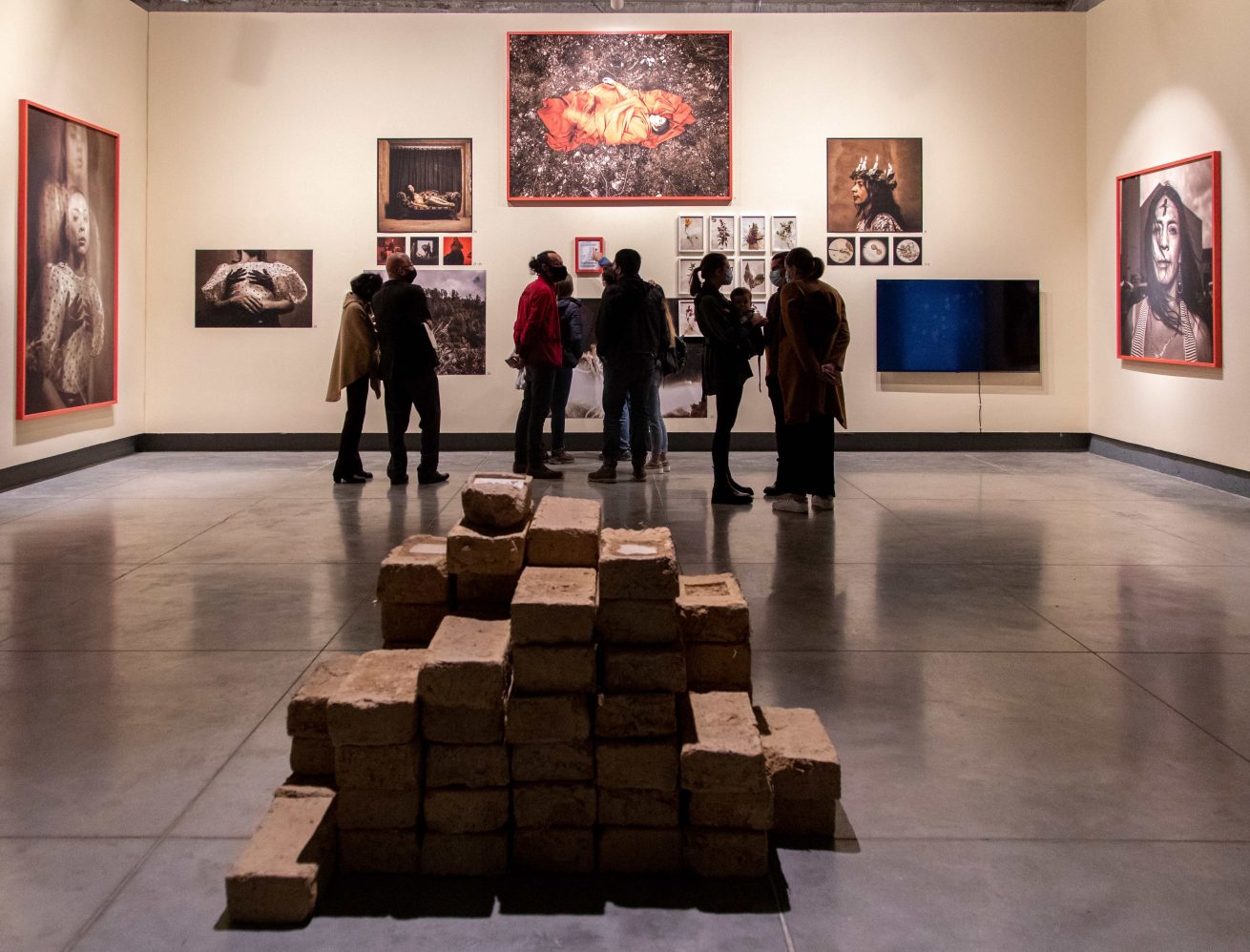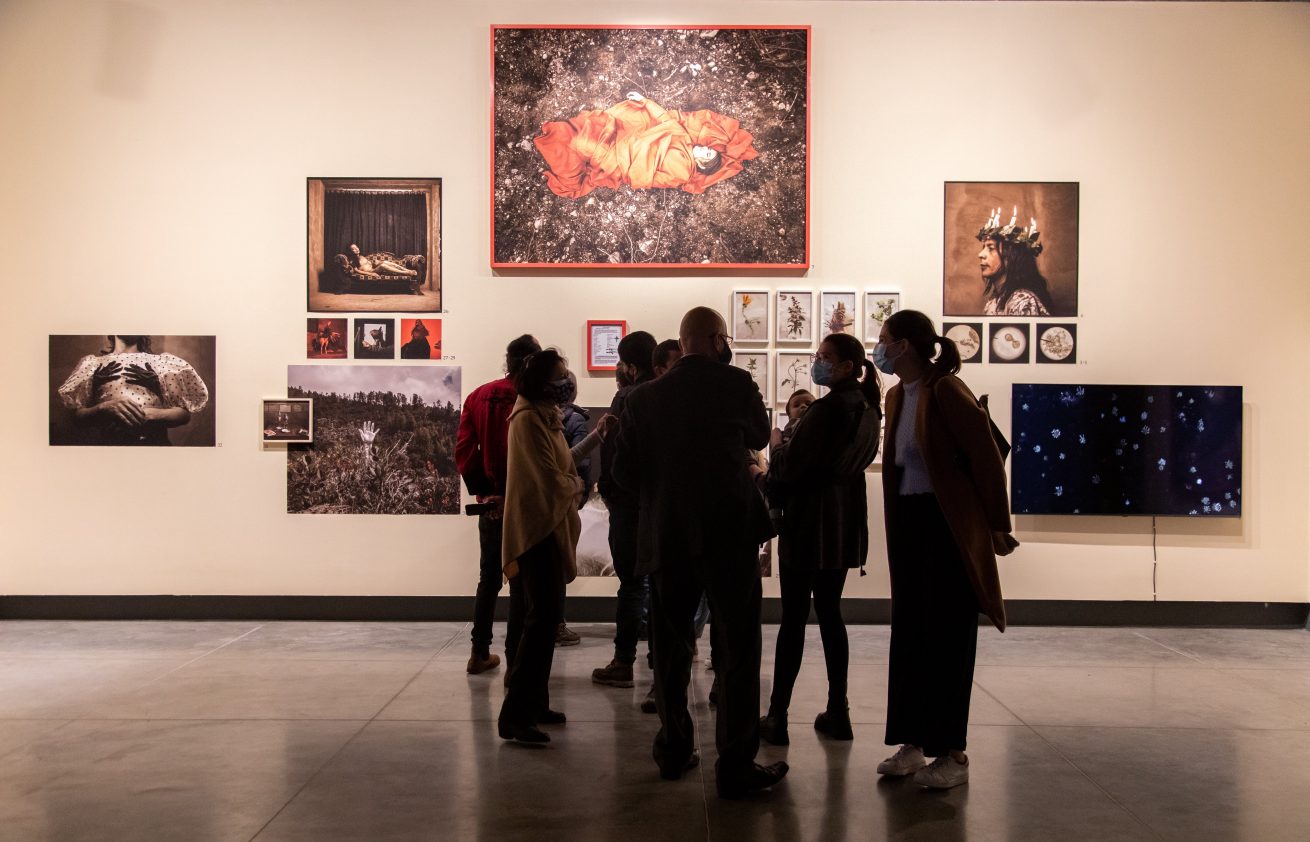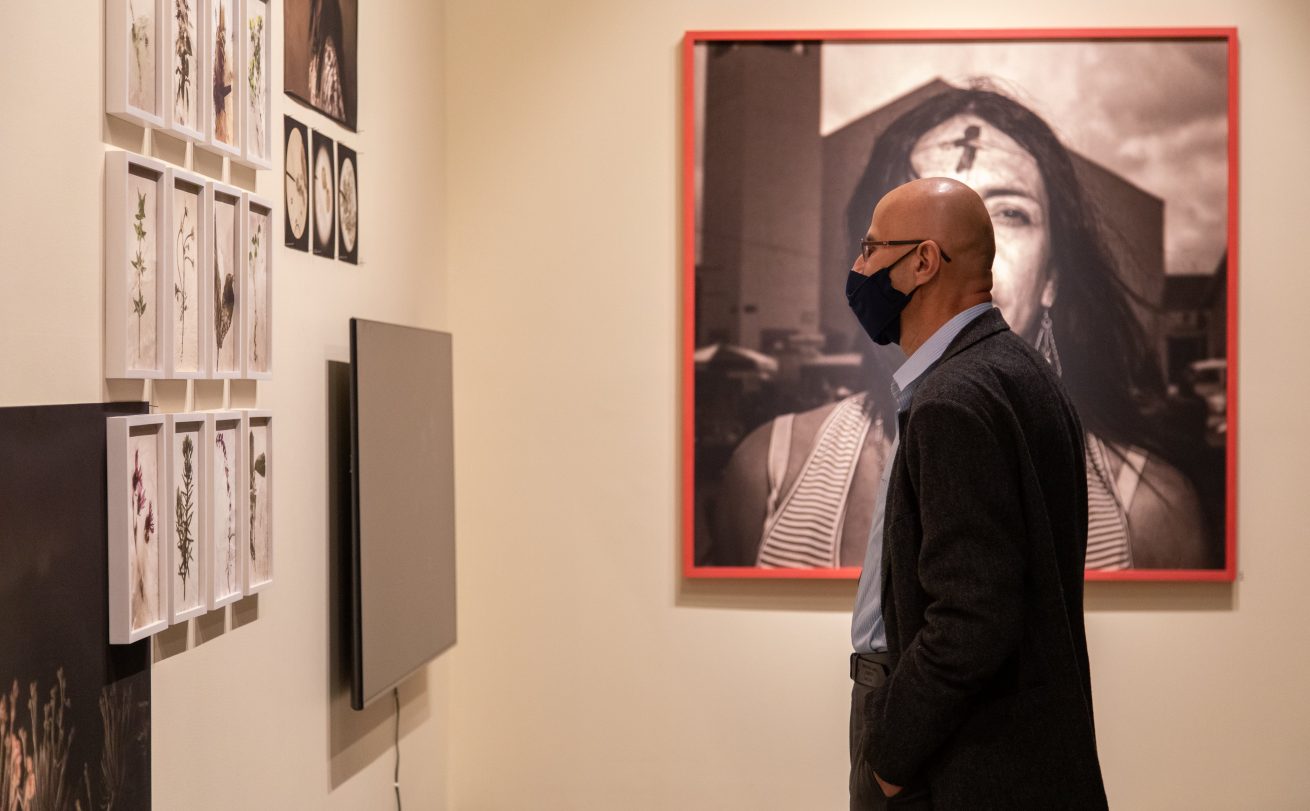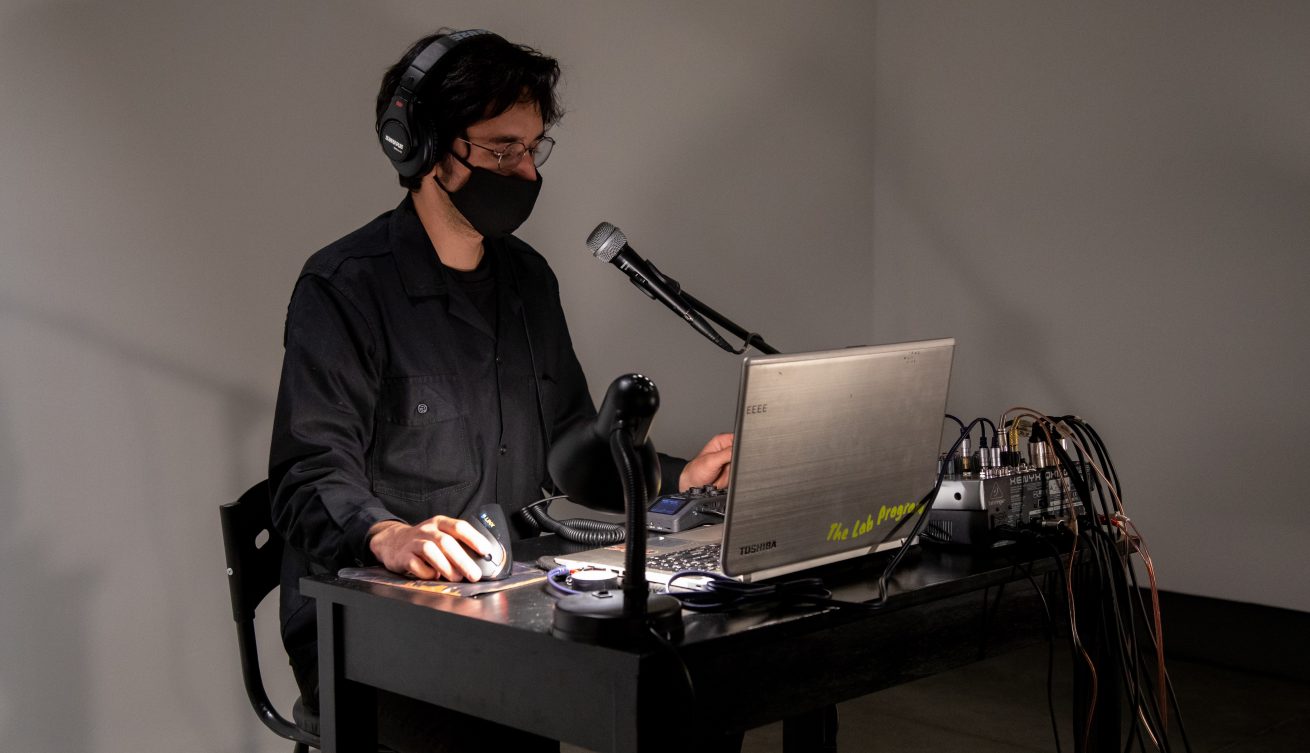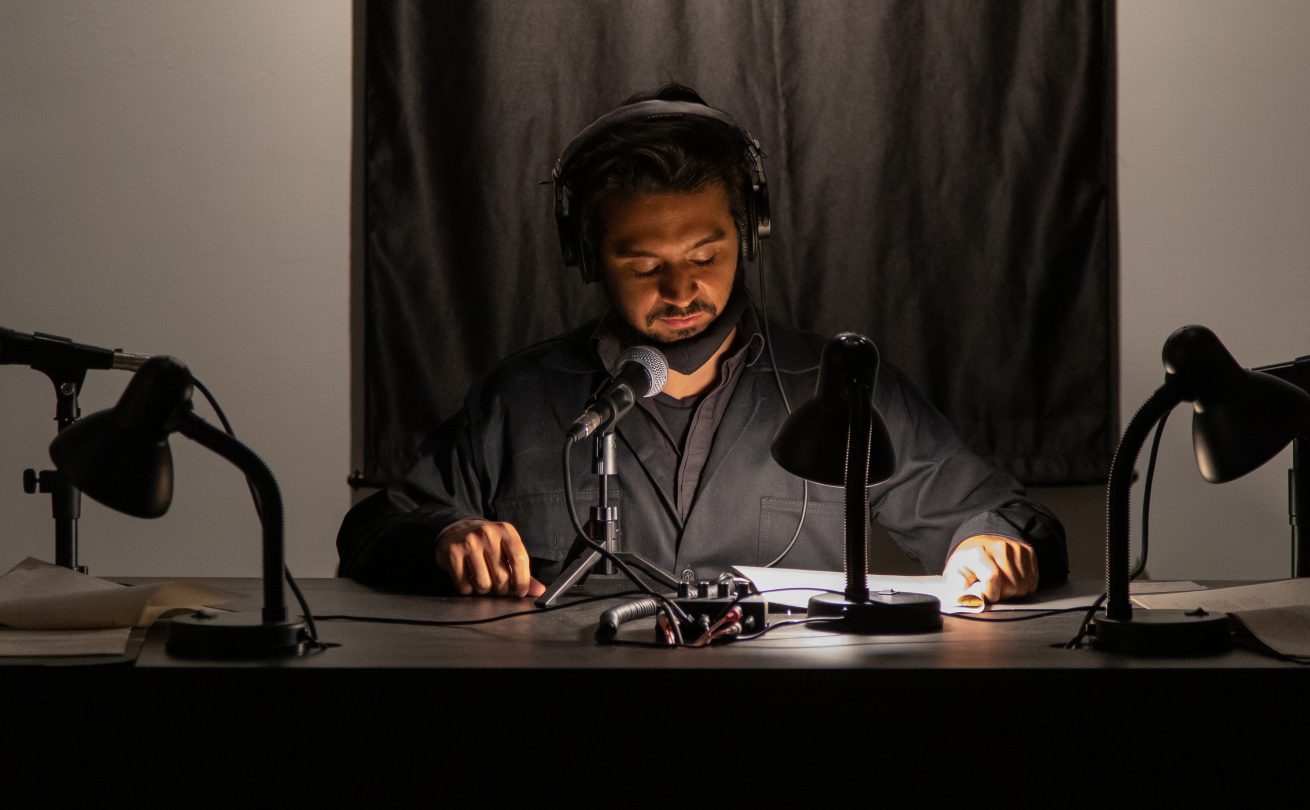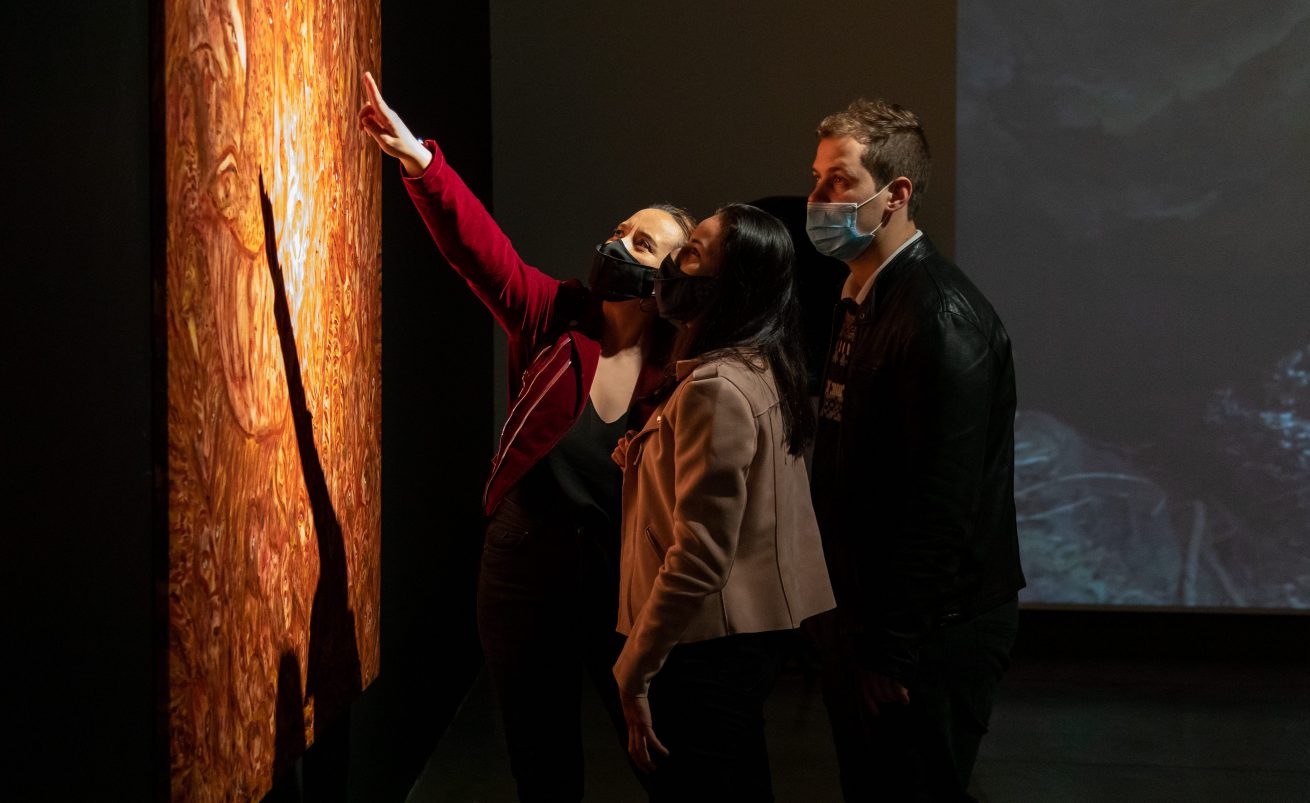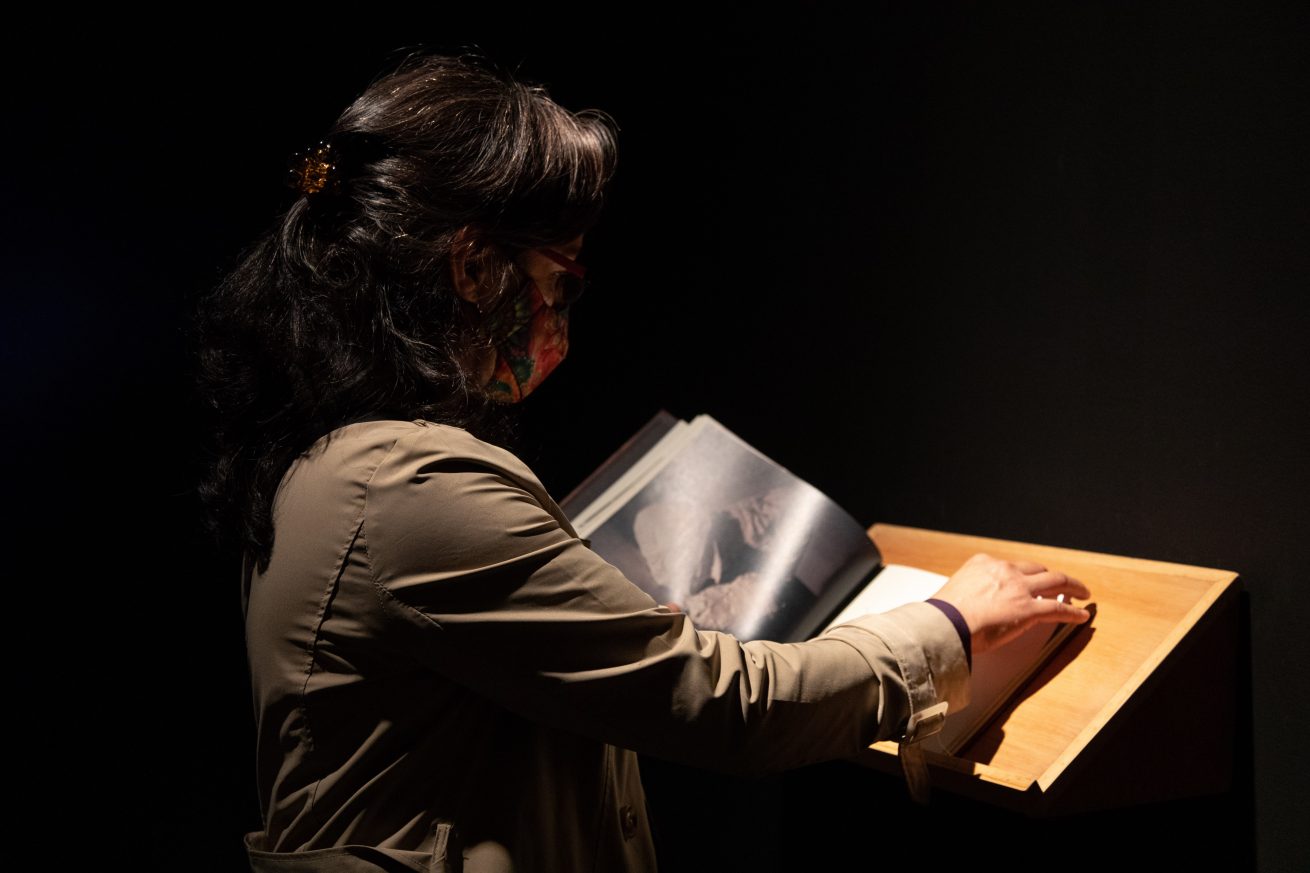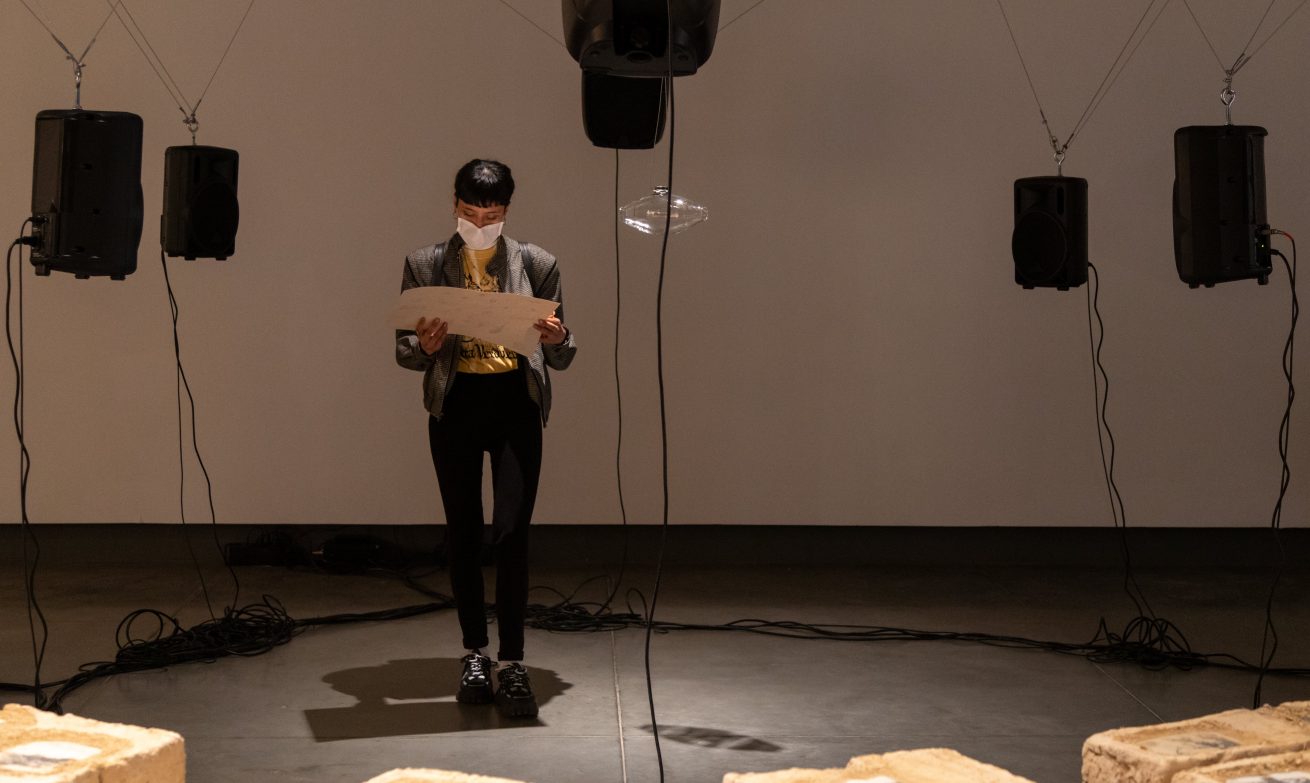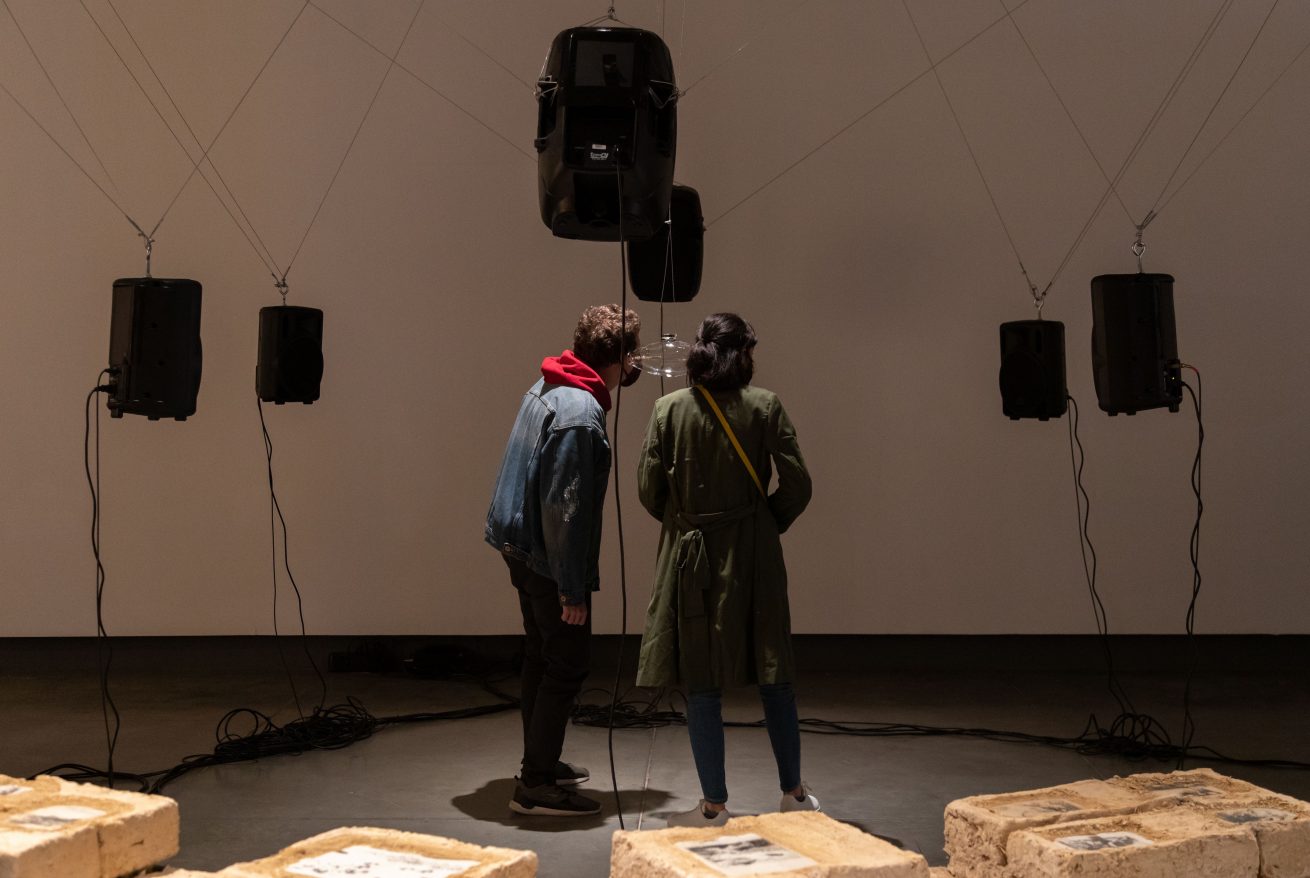Artistas ganadores de la convocatoria XIV Salón Nacional de Arte Joven
Del 13 de marzo de 2021 al 30 de mayo de 2021.
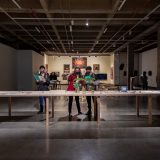
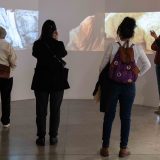

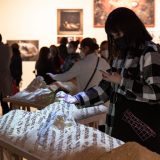
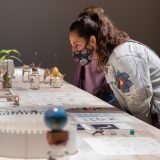
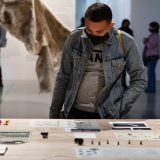
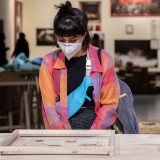
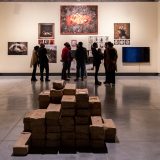
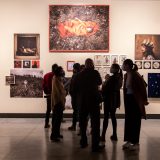
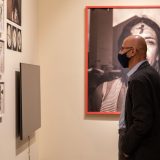
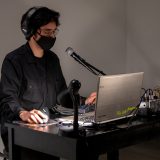
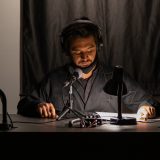

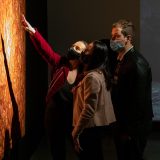

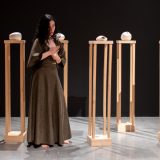
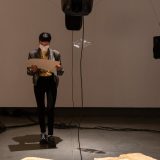
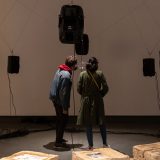
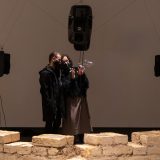
Descargue la guía de sala de la exposición aquí.
El Salón Nacional de Arte Joven (SNAJ) nació en 1991 como la primera convocatoria pública distrital dirigida a jóvenes artistas, y su primera edición se realizó en la Galería Santa Fe, ubicada en ese momento en el segundo piso del Planetario de Bogotá.
En el 2019 la Galería Santa Fe abrió sus puertas en su nueva sede, en el primer piso del mercado La Concordia, y así surgió la posibilidad de llevar el Salón de vuelta al panorama artístico colombiano mediante una convocatoria lanzada en el Portafolio Distrital de Estímulos de 2020.
Nuevamente apareció la irresoluble, permanente e inquietante pregunta sobre qué es el arte joven, y con ella, otros interrogantes: ¿qué es lo emergente?, ¿qué es lo joven? o ¿qué es la juventud? La cuestión se ha resuelto aplicando la fórmula aparentemente objetiva de que el arte joven es el que producen los artistas menores de 35 años. Si bien esta decisión simplifica la ardua tarea de crear límites, no resuelve la complejidad de estas preguntas. Parecen inquietudes sin respuesta, pese a que hay una conciencia explícita de que allí subyace una búsqueda, actual y urgente, de una respuesta que espera definir el arte mismo. En medio de estas inquietudes se propone otra reflexión que permite leer lo joven, no mediante un criterio ligado a la edad de las personas, sino visualizándolo como un punto de partida, un momento de desarrollo de la práctica, un estado inicial que posibilita hablar de procesos de maduración de una propuesta, más que de la edad de los artistas.
Para esta edición, la decimocuarta, una terna de jurados conformada por Juan Alonso, María Sol Barón y Yhonathan Virgüez seleccionaron los proyectos de ocho artistas colombianos que tienen algo en común. Quizá por la apremiante necesidad pandémica de la relación con otros, o por el efecto mismo del espacio de la Galería Santa Fe en La Concordia, todos encarnan, de manera diversa, la noción de habitar.
Con esta selección de ocho proyectos, el espacio expositivo se convierte en una maqueta que intenta esbozar, sobre los ámbitos personal, histórico y orgánico, cuestiones que confluyen para dar cuenta de un momento que reformula la corporeidad y que, al mismo tiempo, define un ambiente que ha comenzado a ser reconocido como una nueva realidad. Cada uno, en su trabajo, se pregunta sobre el concepto de habitar con otros.
Las ocho obras exploran el espacio de la Galería Santa Fe y proponen formas de interpretar el lugar habitado, de habitar el lugar y, sobre todo, de habitar con otros.
Inhabiting with others
The Salón Nacional de Arte Joven (SNAJ) was created in 1991 as the first district public call for young artists, and its first edition was held at the Galería Santa Fe, located on the second floor of the Bogotá Planetarium at that time.
In 2019 the Galería Santa Fe opened its doors at its new headquarters on the ground floor of La Concordia marketplace, realizing the possibility of returning the Salón back to the Colombian art scene. This was achieved through a public call issued as part of the 2020 District Incentive Portfolio.
Once again, the unresolvable, permanent and unsettling conundrum about what young art is became relevant, and along with it, other questions: What is emerging? What is young? Or, what is youth? The issue was answered by applying the apparently objective formula that young art is that is produced by artists under the age of thirty-five. While this decision simplifies the difficult task of setting boundaries, it does not solve the complexity of these questions. They stand out as unanswered concerns despite the fact that there is an explicit awareness that such a response entails an ongoing and urgent search for an answer that hopes to define art itself. In the midst of these queries, another reflexion is proposed, is related to the definition of the young, not through a criterion subject to age of someone, but by conceiving it as a starting point, a moment of development, an initial state that allows the possibility of talking about and artist’s maturation process.
For this fourteenth edition of the Salón, a jury comprised by Juan Alonso, María Sol Barón and Yhonathan Virguez selected the projects of eight Colombian artists that have a common thread. Perhaps, due the pressing need for relationships with others during the pandemic, or because of the very effect of the Galería Santa Fe space in La Concordia, all of them embody the notion of inhabiting.
By means of these eight projects, the exhibition space becomes a model that tries to outline -through personal, historical and organic aspects- issues coming that come together and give account of a moment that rethinks corporeity and at the same time, defines an environment which has begun to be recognized as a new reality. Each one, in their work, addresses the concept of inhabiting with others.
The eight works explore the space of the Galería Santa Fe and offer ways of interpreting the inhabited place as well inhabiting the place and above all, inhabiting with others.
Sobre lxs artistas y sus obras:
Habitar en los pliegues
Ana María Roa Limongi
La piel es un estado emocional, es un estado del ser, es el estado propio de la naturaleza salvaje femenina.
Clarissa Pinkola Estés
Habitar en los pliegues consiste en la construcción colectiva de una tela de fieltro que tiene entramadas piezas vegetales como hojas, ramas, raíces, etc. La obra pretende intermediar entre los mundos vegetal, animal y humano. Esta piel de fieltro es habitada por tres mujeres que juegan a relacionarse con ella como si fuese su piel, su cuerpo, su casa. Queda en evidencia un interés en generar relaciones y en cuestionar las maneras en que nos vinculamos con nuestro entorno. Esta propuesta invita a los espectadores a salir de su cuerpo recto y vertical, para investigar qué animales y plantas los componen, para alcanzar ―¿o retornar?― a su naturaleza salvaje. El propósito es comprender que el ser humano “no es de ninguna manera un producto firme y duradero (…) es más bien un ensayo y una transición”, como sostenía Hermann Hesse.
The skin is an emotional state, it is a state of being. It is the state of the feminine wild nature.
Clarissa Pinkola Estes
Habitar en los pliegues (Inhabiting in the folds) consists of the collective construction of a fabric with the technique of felt, which between the layers of wool has woven vegetable pieces such as leaves, branches, roots, etc. The artwork is intended to be an intermediary between the plant, animal and human worlds. This felt skin is inhabited by three women who pretend to be linked to it as if it were their skin, their body, their home. It shows an interest in generating relationships and questioning the ways in which we relate to our environment. This proposal invites the viewers to leave their straight and vertical body, to investigate which animals and plants comprise them, to reach (or return?) to their wild nature. The purpose is to understand that the human being “is by no means a firm and lasting product (…) it is rather a subject of testing and a transition”, as Hermann Hesse said.
Biografía de la artista
Artista plástica que se ha inclinado por el uso de textiles como medio para la elaboración de sus obras, principalmente el fieltro, que le permite generar preguntas y relaciones en torno al cuerpo, el paisaje y el territorio. En el año 2019 fue tallerista del curso Lana y Tacto donde enseñó la técnica del fieltro. Ha sido parte colectivos que vinculan las artes con diversos aspectos sociales, como Con la Cuchara no se Juega, que realiza recetarios que vinculan las prácticas orgánicas de siembra con las posibilidades culinarias de alimentos locales; Echar Semilla, ganador de la Beca Laboratorio Huertas Urbanas 2018, que creó una huerta urbana en el barrio Egipto junto con la comunidad y el apoyo de la Fundación Buena Semilla, y Harto Colectivo, ganadores de la Beca de Programación en Artes Plásticas Red Galería Santa Fe, en el año 2019, que desarrolló el Laboratorio para Artistas Flotantes.
Visual artist who has opted for the use of textiles for the creation of her artworks, mainly through felt, which allows her to generate questions and relationships around the body, the landscape and the territory. In 2019 she was a speaker at the course Lana y Tacto (Wool and Touch) wherein she taught the technique of felting. She has participated in different collective groups, which link the arts with various social aspects, such as the group known as Con la Cuchara no se Juega, which blends recipe books linking organic planting practices with the culinary possibilities of local foods; Echar Semilla, a collective that won the Urban Garden Laboratory Grant, in 2018, which created an urban vegetable garden in the Egipto neighborhood together with the community and with the support of the Buena Semilla Foundation, and Harto Colectivo(Harto Collective), a group that won the Programming Grant in Visual Arts of the Galería Santa Fe Network, in 2019, which developed a Laboratorio para artistas flotantes (Laboratory of Floating Artists).
Redes sociales:
Instagram: @curubaana
Página web: curubana.portfoliobox.net
Limpia
Carlos Saavedra
Limpia invita a observar la llamada limpieza social, desde la perspectiva de aquellas personas que la encaran y la resisten. El proyecto acompaña a un grupo de mujeres transgénero que, enfrentadas al descarte oficial y paraoficial de su vida, buscan en los recursos de la magia una esperanza de protección y una forma de afirmar su propia agencia. La serie multimedia se desarrolla en una convergencia del fotoperiodismo, la antropología y la representación artística, poniendo de presente el realismo mágico que, convocado por estas mujeres, ilumina sus poderes y los mundos que conjuran. Limpia escenifica la trayectoria de la transformación trazada por estas autodenominadas brujas mediante la manipulación de plantas y la comunión con fuerzas naturales y paranormales, con el objeto de forjar conexiones poderosas y duraderas entre personas y mundos alternativos.
Investigación: Sebastián Ramírez y Carlos Saavedra.
Basada en las historias de Stefania Grajales, Paola Caicedo y Catalina Lozano.
Limpia (Cleansing) invites us to observe the so-called social cleansing from the standpoint of those who face it and resist it. The project accompanies a group of transgender women who, faced with the official and para-official notice against their lives, they resort to the resources of magic with the hope of protection and as a way to assert their own legacy. The multimedia series unfolds in a convergence of photojournalism, anthropology and artistic representation, through the magical realism that, as called by these women, illuminates their powers and the worlds they summon. Limpia (Cleansing) stages the transformation of these self-styled witches through the manipulation of plants and the communion with natural and paranormal forces, in order to forge powerful and lasting connections between people and alternative worlds.
Research: Sebastián Ramírez and Carlos Saavedra.
Based on the stories of Stefania Grajales, Paola Caicedo and Catalina Lozano.
Biografía del artista
Fotógrafo nacido en Cartagena en 1987. Ha sido becario de Colfuturo y beneficiario de la Beca Internacional de Posgrado de la Universidad de Artes de Londres (UAL). En 2019 culminó sus estudios de maestría en el London College of Communications y en la UAL. Sus proyectos se concentran en las diferentes etapas del ser humano, la violencia, el trauma y la realidad colombiana.
Su obra ha sido expuesta en Nueva York, Los Ángeles, Londres, Washington, Ciudad de México, París, Bogotá y Dhaka. En el 2020 y el 2015 fue seleccionado para el New York Times Portfolio Review (2015 y 2020), y en 2012 fue finalista de la Foto del Año de la National Geographic. Ha dado conferencias en Conarte (México), en la sede de las Naciones Unidas para la Comisión de la Condición Jurídica y Social de la Mujer (Nueva York), y recientemente en el University College of London.
Photographer born in Cartagena in 1987. He has been a Colfuturo grant holder and a recipient of the International Postgraduate Scholarship of the University of the Arts in London (UAL). In 2019 he ended his master’s studies at the London College of Communications and UAL, where he graduated with distinction. His projects focus on the different stages of the human being as well as violence, trauma and the Colombian reality.
His work has been exhibited in New York, Los Angeles, London, Washington, México City, París, Bogotá and Dhaka. In 2020 and 2015 he was selected for the New York Times Portfolio Review (2015 and 2020), and in 2012 he was a finalist for the National Geographic Photo of the Year. He has lectured at Conarte (México), at the United Nations headquarters for the Commission on the Legal and Social Status of Women (New York), and recently at the University College of London.
Redes sociales
Instagram: @carlosaavedra7
Página web: www.saavedravisual.com
Llamado de guerra: Archivo sonoro del conflicto
Esteban Ferro Astaiza
El 6 de noviembre de 1985, a las 11:30 a. m., el grupo guerrillero M-19 empezó la toma armada del Palacio de Justicia en pleno centro de Bogotá. Apenas iniciaron los hechos, varios medios de comunicación realizaron un reportaje radial de cuanto acontecía dentro y fuera del Palacio. Ese día, los colombianos pudieron seguir los sucesos escuchando una transmisión en directo que relataba, momento a momento, los hechos. En el tercer anexo del informe de la Comisión de la Verdad sobre lo ocurrido en la toma, se examina el papel que tuvieron los medios de comunicación en los acaecimientos del Palacio de Justicia. Llamado de guerra: Archivo sonoro del conflicto es un proyecto que se propone crear, recopilar y experimentar con un archivo sonoro de acontecimientos políticos ocurridos en América Latina, en los que la radiotransmisión y la grabación de audio han tenido un papel importante en su desenvolvimiento.
On November 6, 1985, at 11:30 a.m., the guerrilla group M-19 attacked the Palacio de Justicia(Palace of Justice, location of the country’s high courts) in downtown Bogotá. As soon as the events began, several media carried a live radio report of what was happening inside and outside the palace. That day, Colombians were able to follow what was happening by listening to a live broadcast that recounted the situation moment by moment. The third annex of the Truth Commission’s report on the events that took place during the takeover of the Palace of Justice examines the role played by the media in such events. Llamado de Guerra: Archivo Sonoro del Conflicto (War Call: Sound Archive of Conflict) is a project intended to create, compile and experiment with a sound archive of political events in Latin America, wherein radio broadcasting and audio recording have played an important role in their development.
Biografía del artista
Artista multidisciplinar colombiano residente en Bogotá. Su trabajo explora las diferentes capas de significado existentes en fenómenos sonoros relacionados con acontecimientos políticos e históricos. Su atención se centra en la oralidad de discursos y relatos relativos a dichos sucesos. Cursó estudios de Artes Plásticas y Visuales en la Universidad Nacional de Colombia. A lo largo de su trayectoria se ha enfocado en realizar proyectos artísticos relacionados con el arte sonoro, los medios electrónicos y la producción editorial. Ha participado en exposiciones en Colombia, México y Alemania, en lugares como Plataforma Bogotá, Museo de Arte UN, Espacio Odeón, Zona de Desgaste (Ciudad de México) y Erholungshaus Bayer Kultur (Leverkusen), entre otros.
He is a Colombian multimedia artist residing in Bogotá. His work explores the different layers of meaning existing in sound phenomena related to political and historical events. His attention is focused on the orality of speeches and stories related to such incidents. He studied Visual Arts at the Universidad Nacional de Colombia. Throughout his career he has focused on artistic projects related to sound art, electronic media and editorial production. He has participated in exhibitions in Colombia, México and Germany, in places such as Plataforma Bogotá, Museo de Arte UN, Espacio Odeón, Zona de Desgaste (México City) andErholungshaus Bayer Kultur (Leverkusen), inter alia.
Redes sociales
Instagram: @ferroastaiza
El espacio entre las cosas
Germán Benincore
El espacio entre las cosas parte de nociones extraídas de teorías de la complejidad, que entienden el universo como un entramado de relaciones entre sistemas. Benincore está convencido de que las cosas están inevitablemente conectadas entre sí, aunque no sabe exactamente cómo. Esta idea es el punto de partida de una serie de ejercicios de adivinación desde las exiguas experiencias de la cotidianidad en aislamiento: ¿acaso son signos de eventos a mayor escala, los anodinos microeventos que ocurren en el encierro? ¿Hablan sobre el futuro o sobre el pasado? ¿Cómo saber cuáles son signos y cuáles no? El proyecto también plantea algunas preguntas sobre aquello que el artista ha sentido que ha cambiado durante aquel tiempo. Se trata de un juego y también de un tren de pensamiento que queda registrado en forma de dibujos y objetos que, lejos de dar respuesta a los interrogantes, cuestionan continuamente su propia validez.
The project El espacio entre las cosas (The Space Between Things) starts from certain notions extracted from the theories of complexity, which consider the universe to be a web of relationships between systems. The artist is convinced that things are inevitably connected to each other, although he does not know exactly how. This idea is the starting point for a series of guessing exercises based on the meager experiences of everyday life in isolation: are they signs of events on a larger scale, the anodyne micro-events that occur in confinement? Do they speak of the future or the past? How do we know which are signs and which are not? The project also raises some questions about what the artist feels that has changed during that time. It is a game and also a train of thought that is recorded as drawings and objects that, far from giving answers to the questions, continually question their own validity.
Biografía del artista
Nació en Bogotá en 1993. Es artista visual egresado de la Pontificia Universidad Javeriana. Su práctica parte de procesos largos, de procedimientos inscritos en su cotidianidad, de trenes de pensamiento transformados en imágenes y objetos mediante la acción, de periodos de tiempo condensado utilizando las manos. Entre sus áreas de exploración están lo que sus manos pueden hacer, así como la inmediatez y lo pequeño. Su obra está inevitablemente entretejida con su vida, que es la vida de una persona común y corriente. Le interesa el dibujo como herramienta de pensamiento, y los libros como contenedores privilegiados de procesos plásticos y como medio de distribución alternativo al formato único de exposición. Ha participado activamente en diversas muestras, y desde el 2019 hace parte del proyecto editorial Tormenta Ediciones.
The artist was born in 1993 in Bogotá. He is a visual artist graduated from the Pontificia Universidad Javeriana. His work starts from long processes, from procedures inscribed in his daily life, from trains of thought transformed into images and objects through action, from condensed periods of time using his hands. His areas of exploration include what his hands can do, as well as immediacy and the small. His work is inevitably interwoven with his life, which is the life of an ordinary person. He is interested in drawing as a tool for thought, and in books as privileged containers of visual processes and as an alternative means of distribution to the single exhibition format. He has actively participated in several exhibitions. Since 2019 he has been part of the editorial project Tormenta Ediciones.
Redes sociales
Instagram: @gbenincore
El espacio en el espejo
Jonathan Chaparro
El espacio en el espejo es un proyecto que aborda el entretejido de emociones, recuerdos e imaginarios construidos en la casa en la que, durante los últimos cincuenta años, han vivido los abuelos paternos de Jonathan Chaparro. Su objetivo es develar la condición etérea que estos aspectos adquieren con el paso del tiempo. La obra consiste en tres instalaciones realizadas a partir de una serie de visitas, charlas y ejercicios de observación en los que Chaparro encontró de manera constante a sus abuelos recostados en su cama, viéndose en el espejo de su tocador con la mirada perdida. La imagen en el espejo y la lúgubre atmósfera del sitio hicieron que los percibiera inmersos en un tiempo distinto, aislados del presente. De esta manera, el artista se planteó recrear dichas sensaciones a través de un portal, como el que atravesó Alicia en el cuento de Lewis Carroll.
El espacio en el espejo (The space in the mirror) is a project that addresses the interweaving of emotions, memories and imaginaries constructed in the house where Jonathan Chaparro’s paternal grandparents have lived for the past fifty years. Its objective is to unveil the ethereal condition that these aspects acquire with the passage of time. The work consists of three installations made from a series of visits, talks and observation exercises in which Chaparro constantly found his grandparents lying on their bed, looking at themselves in the mirror of their dressing table with a lost gaze. The image in the mirror and the gloomy atmosphere of the place made him perceive them immersed in a different time, isolated from the present. This way, the artist sets out to recreate these sensations through a portal, like the one Alice went through in Lewis Carroll’s story.
Biografía del artista
Artista visual, con especialización en Fotografía de la Universidad Nacional de Colombia, magíster en Artes Visuales por la Universidad Nacional Autónoma de México. Sus obras se han exhibido en Francia, España, México, Chile y Colombia. Ganó el 7.° Salón de Arte Joven del Club El Nogal (2013). En el 2015 realizó una estancia de investigación en el máster de Fotografía de la Universidad Politécnica de Valencia, en España. Obtuvo el segundo puesto en el 9.° Salón de Arte Joven de la Embajada de España y Colsanitas (2016). En el 2018 obtuvo mención de honor en la convocatoria para intervenir el espacio Fragmentos. Durante el 2020 fue seleccionado para participar en Imagen Regional 9, del Banco de la República, y en Documenting the Impact of Covid-19 through Photography: Collective Isolation in Latin America, del programa de Arte, Cultura y Cine del Centro David Rockefeller de Estudios Latinoamericanos de Harvard.
Visual artist with specialization in photography from the Universidad Nacional de Colombia, Master in Visual Arts from the Universidad Nacional Autónoma de México. His works have been exhibited in France, Spain, México, Chile and Colombia. In 2013 he won the 7th Young Art Show of El Nogal Club. In 2015 he did a research internship in the Master of Photography at the Universidad Politécnica de Valencia, in Spain. In 2016 he won second place in the 9th Young Art Show of the Embassy of Spain and Colsanitas. In 2018 he obtained honorable mention in the call to work on the space known as Fragmentos (Fragments). During 2020 he was selected to participate in Imagen Regional 9, of the Central Bank of Colombia, and in Documenting the Impact of Covid-19 through Photography: Collective Isolation in Latin America, of the Art, Culture and Film program of the David Rockefeller Center for Latin American Studies at Harvard.
Redes sociales
Instagram: @jonathan_chaparro_m
Página web: www.jonathanchaparro.art
Llamado de origen
Juanita Espinosa
La obra parte del estudio del fenómeno electroacústico del feedback con el objetivo de indagar el vacío y la hipótesis sobre la señal de onda de este, pues dentro de su cuerpo sonoro alberga una partícula del origen llamada La bestia. Para ello, Espinosa ha creado instrumentos de cerámica y ha realizado acciones sonoras de composición y modelado a partir de experiencias de prueba y error con las arcillas, considerando las fuerzas físicas que envuelven cada pieza. En esta inmersión sonora, la cerámica se adecua para la transmisión de energía eléctrica, y su forma le otorga una acústica particular, gracias a la cual el fenómeno en acción propone una escucha profunda del ruido y lo que nos mueve a taparnos los oídos. La artista se concentra en la acción de conducir el oído hacia lo desconocido, con el objeto de entrar en diálogo y tocar el lugar donde convive La bestia.
The work starts from the study of the electroacoustic phenomenon of feedback in order to research the emptiness and the hypothesis about the feedback wave signal, which has an origin particle, called by the name of the Beast. To this end, the artist has created ceramic instruments and performed sound actions of composition and modeling from trial and error experiences with clays, considering the physical forces surrounding each piece. In this sonorous immersion, the ceramic is suitable for the transmission of electric power, and its shape contributes with a particular acoustic, which causes the phenomenon in action to propose a deep listening of what we classify as noise, conducting us to cover our ears. Based on this theory, the artist focuses on the action of leaning the ear towards the unknown, in order to enter into dialogue and contact with the Beast.
Biografía de la artista
Artista multidisciplinar egresada de la Pontificia Universidad Javeriana. Radicada en Bogotá, ha participado en diferentes exposiciones, conciertos y eventos culturales, tanto nacionales como internacionales. Su práctica cubre medios como la escultura, el dibujo, el video, la performance, la instalación, el paisaje sonoro y la gestión. Está interesada en la exploración del sonido como materia viva que dialoga con el cuerpo y el entorno que sostiene su existencia. La estrecha relación que propone entre arte, ciencia y comunidad la motiva a la investigación práctica y activa de diversas disciplinas, conservando una visión del arte como parte terapéutica de la medicina alternativa y social. Ganadora de la Beca Red GSF 2020, categoría Laboratorios de prácticas artísticas experimentales en El Parqueadero. Colaboró en el libro The Body in Sound: Music and Performance, publicado en 2021 por la editorial Routledge. Hizo parte de los veinticinco artistas finalistas del Premio de Arte Joven 2020.
Multidisciplinary artist graduated from the Pontificia Universidad Javeriana. Residing in Bogotá, she has participated in various exhibitions, concerts and cultural events, both nationally and internationally. Her practice covers different fields of art such as sculpture, drawing, video, performance, installation, soundscape and management. She is interested in the exploration of sound as a living matter that speaks with the body and the environment that sustains her existence. The close relationship she proposes between art, science and community motivates her to the practical and active research of several disciplines, preserving a vision of art as a therapeutic part of alternative and social medicine. Winner of the 2020 Experimental Art Practice Labs Grant in El Parqueadero, she has collaborated in the book The Body in Sound: Music and Performance, to be published by Routledge in 2021. She was part of the twenty-five finalist artists of the 2020 Young Art Prize.
Redes sociales
Instagram: @juanitaespinosa.art
Página web: www.juanitaespinosa.com
Pajarera
Julia Nanda Bejarano López
Pajarera es una instalación sonora plurifocal, un coro que entremezcla poéticamente sonoridades intervenidas de pájaros, respiraciones, coros del mundo y dos citas que apelan con palabras a lo amoroso, la representación de espacialidad y al diálogo sonoro: un verso de Romeo y Julieta de William Shakespeare, y un verso de Gracias a la vida de Violeta Parra.
En el centro de la instalación se encuentra un objeto de vidrio que invita a dos personas a respirar en su interior para escuchar al otro y visualizar el aliento compartido ―dadas las circunstancias, no podrá ser usado, pero sí pensado―.
Pajarera, dispuesta sugerentemente entre columnas, constituye un punto de encuentro para toda la obra, fue pensada a partir de la idea de polifonía vital inmersiva, y es una respuesta personal al año en que fue creada, un poema a lo vital y lo colectivo a partir de una escucha abierta y potencial.
Pajarera (Aviary) is a pluri-focus sound installation, an imaginary choir poetically intermingling sounds of birds, states of breathing, choruses of the world and two quotes that appeal with words to love and to the representation of spatiality and sound dialogue: a verse from Romeo and Juliet, by William Shakespeare, and a verse from Gracias a la Vida (Gratefulness to Life), by Violeta Parra.
In the center of the installation there is a glass object inviting two people to breathe inside it to listen to the other and to visualize the shared breath (given the circumstances, it cannot be used, but it can be thought about).
Pajarera (Aviary), is suggestively arranged between columns constituting a single meeting point that serves as the basis of the work, and it is conceived from the idea of immersive vital polyphony, and it is a personal response to the year in which it was created, a poem to the vital and the collective aspects from the open and potential listening.
Biografía de la artista
Artista, compositora, investigadora, Maestra en Artes Visuales de la Pontificia Universidad Javeriana, con un diplomado en Escenografía para teatro, televisión y exhibición comercial de la misma universidad. Para Bejarano el sonido es uno de los aspectos más importantes de su vida, pues le da sentido y bienestar, y es la materia que más utiliza en su quehacer. Se interesa en generar experiencias de escucha permeadas por la idea del estar/habitar acusmático y el estar/habitar poético. Guiada por su gusto por la creación y el trabajo directo con objetos sonoros ―tanto objetos que suenan como el sonido entendido como objeto―, y la manera como estos se desenvuelven en espacios específicos, explora el espacio-tiempo artístico: el concierto electroacústico y la instalación plástica.
Se ha dedicado a la composición de música electroacústica trabajando con sonidos construidos sintéticamente, grabaciones propias realizadas en diferentes lugares del mundo, y con sonidos elaborados en estudio.
Artist, composer, researcher, Master in Visual Arts from the Pontificia Universidad Javeriana in Bogotá, with a course in Scenography for theater, television and commercial exhibition from the same university. The artist recognizes that sound is one of the most important aspects of her life, as it gives her meaning and well-being, and is the material she uses the most in her artistic work. She has been interested in generating listening experiences surrounded by the idea of acousmatic being/inhabiting and poetic being/inhabiting. Guided by her taste for the creation and direct work with sound objects (both sounding objects and sound itself considered an object) and the way they work in specific spaces, she explores two artistic space-times: the electroacoustic concert and the plastic installation.
She has dedicated herself to the composition of electroacoustic music, working with synthetically constructed sounds, her own recordings made in different parts of the world, and with sounds elaborated in a studio.
Redes sociales
Instagram: @juliabejaranolopez
Página web: www.juliabejaranolopez.com
Canto de piedras o Hycas
Pedro Jiménez Herrera
Canto de piedras o Hycas pretende desentrañar y presentar historias y voces diversas asociadas a la relación entre los cerros bogotanos, la ciudad que abrazan y sus habitantes. En ese sentido, su apuesta consiste en la disposición de un espacio en el que se despliega material de archivo asociado a la explotación minera en Bogotá y a la fundación de algunos barrios cercanos a los focos de extracción de piedra y arena, para hacer evidente el imaginario de los cerros como fuente de recursos útiles para el ser humano. Busca, además, propiciar espacios de encuentro para pensar juntos otras formas posibles de acercarnos y relacionarnos con los cerros, basados en el imaginario de estos como seres vivos y fuentes de vida. La palabra muisca hyca traduce “piedra, voz, habla”, y obra como una invitación a adentrarnos en ellos, recorrerlos, detenernos en su interior y escuchar su canto.
Canto de Piedras o Hycas (Singing of Stones or Hycas)aims to unravel and present diverse stories and voices associated with the relationship between the hills of Bogotá, the city they embrace and its inhabitants. In that sense, its purpose is focused, on the one hand, on the arrangement of a space in which archival material associated with the mining exploitation in Bogotá and the founding of some neighborhoods near the sources of stone and sand extraction is displayed, to display the imaginary of the hills as a source of useful resources for human beings. On the other hand, he seeks to provide meeting spaces to think together about other possible ways of approaching and relating to the hills, based on the imaginary of these as living beings and sources of life. The Muisca word hyca translates as “stone, voice, speech”, and can be considered as an invitation to enter them, walk through them, stop and listen to their song.
Biografía del artista
Artista plástico y visual interesado en la promoción de la lectura y la escritura, los procesos de mediación cultural, el trabajo comunitario y colectivo, y el reconocimiento de saberes y memorias locales y territoriales.
Revisar o elaborar archivos son las prácticas a partir de las cuales desarrolla sus procesos de investigación y creación que, a su vez, parten del interés por desentrañar historias de lugares y situaciones específicas para reflexionar sobre la memoria, el pasado, el recuerdo, el olvido y la conciencia material. Caminar por el territorio es una de sus estrategias más cercanas de aprendizaje. Vive y trabaja en Bogotá.
Visual artist interested in the promotion of reading and writing, cultural mediation processes, community and collective work, and the recognition of local and territorial knowledge and memories.
He develops his research and creation processes from reviewing or elaborating archives which, in turn, stem from the interest in unraveling stories of specific places and situations to reflect on memory, the past, remembrance, oblivion and material awareness. Walking through the territory is one of his closest learning strategies. He lives and works in Bogotá.
Redes sociales
Instagram: @pedrogustavojimenez
Consulte las actividades asociadas a la exposición aquí.
Consulte el material de prensa de la exposición.
Para asistir a esta exposición inscríbase en el presente formulario.
Más información sobre los horarios y cómo llegar a la Galería Santa Fe aquí.


